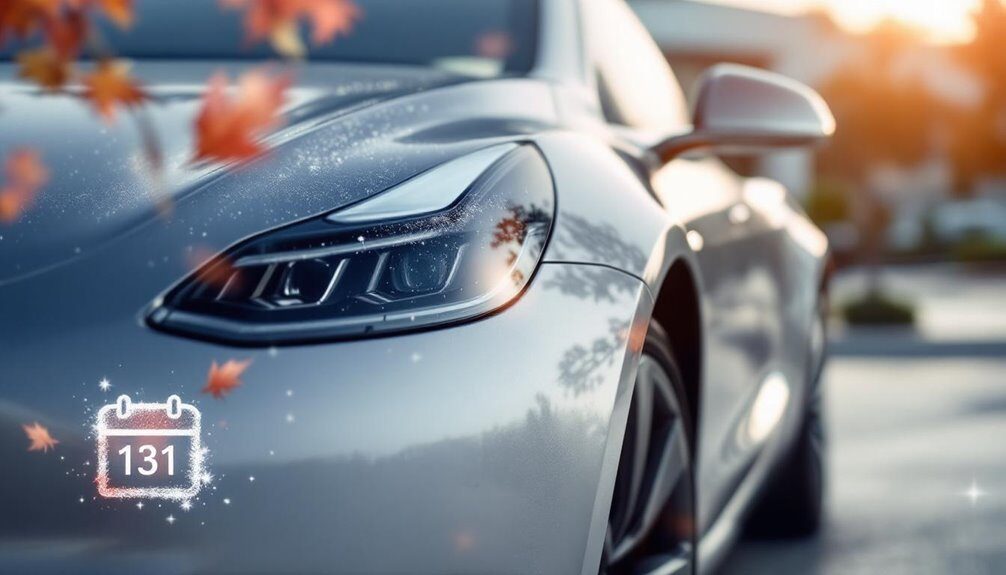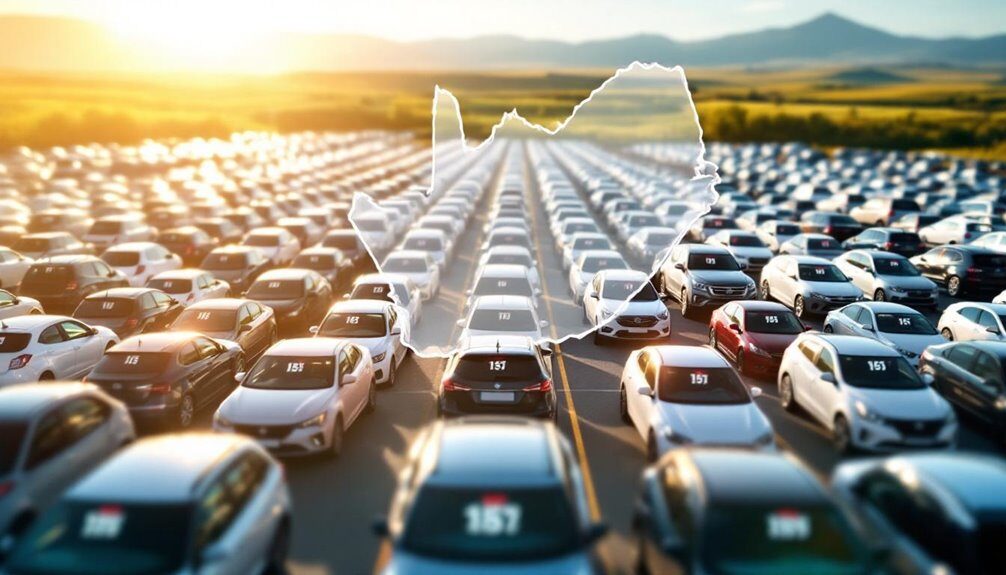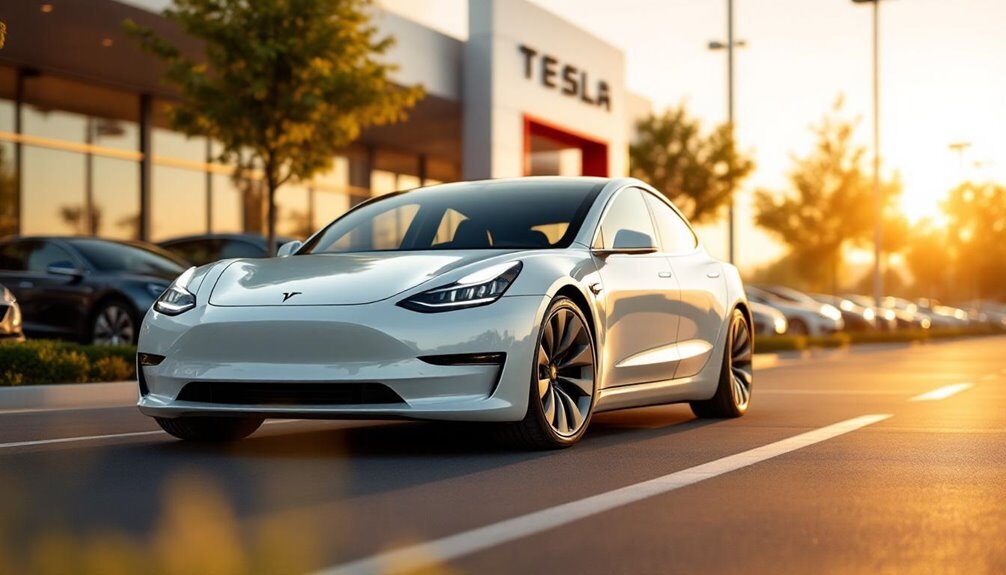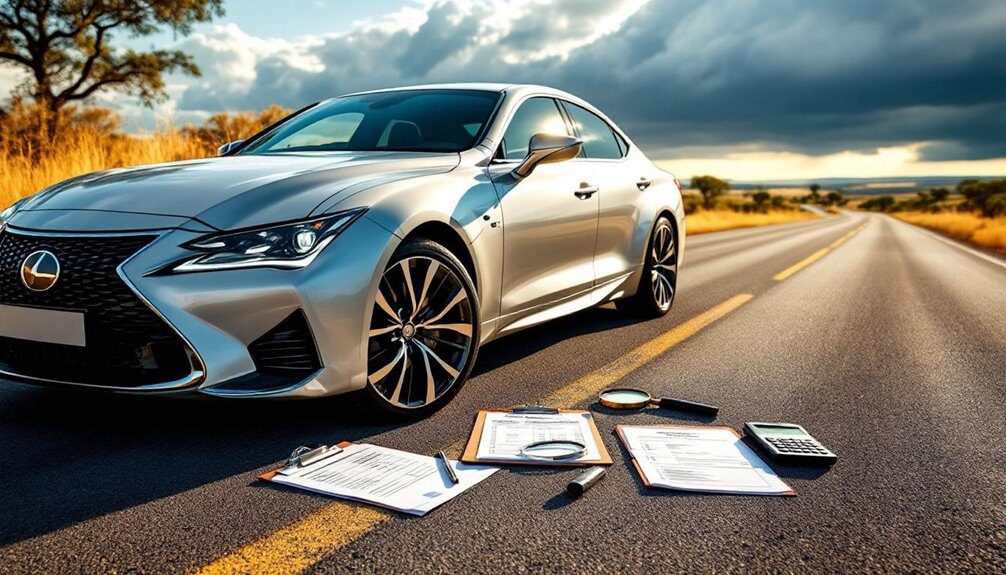Toyota’s getting hammered—31.6% of all vehicle thefts. The Hilux? Basically a criminal favourite. Polo and Ford Ranger round out the extreme-risk trio. Chinese brands like Haval Jolion are climbing fast. Gauteng‘s the theft epicentre, especially Thursdays between 4-9 PM. High-theft vehicles tank resale value by 10-15% and insurance premiums spike 20-30%. You’ll face brutal claims delays and coverage limitations. It’s not just about picking a car—it’s about grasping where you park, when you drive, and what actually shields you.
Toyota Dominates the Theft Statistics
With respect to car theft in South Africa, Toyota doesn’t just lead the pack—it absolutely dominates. We’re talking 31.6% of all recorded vehicle thefts. That’s not close. That’s domination.
The Hilux? Most hijacked vehicle nationwide. The Fortuner? Criminals love its durability and off-road capabilities. The Corolla? Targeted persistently thanks to sheer numbers on our roads. Throw in the Etios, Land Cruiser, Prado, and RAV4—Toyota’s got the complete theft lineup.
Here’s the brutal reality: these vehicles get stolen for resale, export, or parts dismantling. There’s literally a structured criminal economy built around Toyota vehicles. Their popularity, durability, and parts value make them too tempting to thieves. Reputable dealers invest in routine maintenance and meticulous vehicle inspections to ensure customers receive quality vehicles with verifiable histories. Eastern Cape showing concerning growth in hijacking incidents across the country. Carjacking incidences have reached record highs in recent fiscal years, intensifying the urgency for vehicle owners to take protective measures. When purchasing used vehicles, reputable dealers like Autobahn Auto offer transparent inventory and servicing records that can help verify vehicle history. If you’re shopping used, you’re looking at a brand that criminals have effectively weaponised.
Understanding the Most Targeted Vehicle Models
Let’s cut straight to it: certain vehicles are basically wearing a target on their bumpers.
You’ve probably noticed the pattern. Toyota Hilux dominates hijacking statistics—no surprise there. Volkswagen Polo? Easy pickings. Ford Ranger? Criminals love it. But here’s what’s changed: newer models are now in the crosshairs.
| Vehicle Model | Risk Level |
|---|---|
| Toyota Hilux | Extreme |
| Volkswagen Polo | Very High |
| Toyota Corolla Cross | Rising Fast |
| Ford Ranger | Very High |
| Haval Jolion | Emerging Threat |
Chinese brands are climbing the list fast. Haval Jolion just entered the danger zone in 2025. Chery models follow close behind. Criminal syndicates quickly modify—they chase whatever sells. The targeting strategy follows economic logic tied to resale value and parts demand, meaning thieves prioritise vehicles based on market profitability rather than random selection. At Autobahn Motors, we understand the importance of comprehensive maintenance and repair services to help protect your investment against security vulnerabilities. For dedicated support in safeguarding your vehicle, contact our customer assistance team today. Saloons, bakkies, SUVs: they’re all targets now. The takeaway? Popularity equals risk.
Why These Vehicles Attract Thieves
Because these cars are basically cash machines on wheels, that’s why thieves target them.
Your Toyota Hilux? Hot commodity.
Your Volkswagen Polo? Even hotter.
These vehicles command premium prices on both legitimate and black markets, making them irresistible to organised criminal networks.
But it’s not just about resale value.
Parts matter too.
Toyota, Volkswagen, and Ford components stay in consistently high demand on illegal markets.
Luxury compacts like the Audi A3 attract criminals specifically for high-value component trafficking.
Large SUVs get stripped for parts valuable in rural black markets. For vehicle owners needing to replace stolen or damaged components, skilled technicians at professional repair facilities can source quality parts to restore your vehicle.
If you’re looking to replace stolen or damaged components, genuine OEM parts ensure your vehicle maintains proper performance and reliability.
Then there’s prevalence.
The more common your car is, the easier it blends into traffic.
That’s actually dangerous.
Widespread visibility combined with resale demand? Perfect criminal formula.
Add emerging trends—Chinese-branded vehicles like Haval Jolion are exploding in sales, so naturally, thieves are shifting focus towards them.
It’s economics, really.
Regional Hotspots for Car Theft in South Africa
Car theft doesn’t happen evenly across South Africa—it clusters. Gauteng‘s the obvious villain here, accounting for nearly half of all carjackings in 2024. Johannesburg and Pretoria? They’re basically ground zero. But here’s what’s shifting: Eastern Cape and Western Cape are exploding with hijackings. Like, genuinely rapid growth.
Then there’s Mpumalanga—the newcomer nobody saw coming. Hijackings there happen three times more often than thefts. Thursdays between 4 PM and 9 PM? That’s prime time for criminals.
KwaZulu-Natal’s not off the hook either. Durban and surrounding urban centres logged over 1,500 carjackings in six months of 2024. The pattern’s consistent across hotspots: early evening on weekdays, residential driveways, shopping mall car parks. Business vehicles get targeted harder in some regions. Geography matters when you’re buying used.
The Insurance Impact of High-Theft Vehicles
When you buy one of South Africa’s most-stolen cars, your insurance premiums don’t just go up—they skyrocket, because insurers are basically betting you’ll file a theft claim sooner or later.
You’ll also hit a wall of coverage limitations and delays, as insurers tighten their terms and slap mandatory tracking device requirements on high-risk vehicles to protect themselves.
And if you ever try to sell? Good luck, because that same theft classification tanks your resale value, leaving you upside-down on a car that nobody else wants to insure either.
Keeping your vehicle in excellent condition through routine maintenance services demonstrates responsible ownership and can help mitigate some of the elevated insurance costs tied to high-theft classifications.
Regular scheduled maintenance services can help demonstrate vehicle care to insurers, potentially offsetting some of the increased premiums associated with high-theft vehicle classifications.
Premium Costs Rise Significantly
If you’re eyeing that Toyota Hilux or VW Polo, here’s what you’re actually signing up for: sky-high insurance premiums. We’re talking 20–30% increases on top of what regular car owners pay. Insurance companies crunch theft data like their lives depend on it—because they do. High-demand bakkies and SUVs? They’re getting hammered hardest. Popular models mean statistically higher theft targets. Your premium doesn’t stay frozen either. If theft rates spike for your vehicle, insurers adjust mid-policy.
New players on the stolen list—like the Haval Jolion and Chery Tiggo 4 Pro—see premiums jump almost instantly. KwaZulu-Natal‘s especially brutal. The bottom line: that attractive used vehicle comes with a financial catch you’ll feel at renewal time.
Coverage Delays and Limitations
Beyond the premium spike, there’s another gut-punch waiting: your claim might get stuck in limbo.
High-theft vehicles trigger extended processing times. Insurers scrutinise everything. They’ll demand detailed police reports, proof of security compliance, tracking device documentation. Fun stuff. Delays stretch out because missing paperwork is basically standard with these cars—incomplete forms, inconsistent details, conflicting registration info. It’s maddening. Maintaining your vehicle through regular tyre service and other preventive maintenance can sometimes help demonstrate responsible vehicle ownership to insurers, though it won’t eliminate theft-related delays. Additionally, ensuring your brake functionality is properly maintained shows insurers you take comprehensive vehicle care seriously.
| Delay Factor | What Happens | Timeline |
|---|---|---|
| Missing Documentation | Claim stalls indefinitely | Weeks to months |
| Unapproved Security Systems | Mandatory upgrades required | 2-4 weeks minimum |
| Police Report Gaps | Insurer requests clarification | 10+ business days |
| Incomplete Paperwork | Resubmission demanded | 5-7 days per cycle |
| Waiting Periods | Automatic holds enforced | 30-90 days typical |
You’re not just fighting theft. You’re battling bureaucracy.
Resale Value Depreciation Effects
Your car’s resale value doesn’t just drop—it plummets—the moment it lands on the most-stolen list. Here’s why: buyers know what they’re getting into, and they’re demanding discounts to compensate for inflated insurance premiums and security costs.
Popular models like the Toyota Hilux and VW Polo depreciate faster than their safer counterparts. It’s not just perception either:
- Insurance premiums spike dramatically on high-theft vehicles, making ownership expensive
- Hidden theft-related damages create buyer scepticism and lower offers
- Regional theft hotspots intensify depreciation in high-risk provinces like Gauteng
The overlap between best-selling vehicles and most-stolen cars compounds the problem. More buyers on the road means statistically higher theft rates, which tanks resale prices. You’re stuck holding a depreciating asset that nobody wants at full value.
How Theft Risk Affects Vehicle Resale Value
When a vehicle lands on South Africa’s most-stolen list, its resale value doesn’t just dip—it tanks. You’re looking at depreciation rates 10–15% steeper than comparable models over three years. That’s brutal.
Insurance premiums spike for high-theft vehicles, and buyers notice. Higher insurance costs directly reduce what someone’s willing to pay. You might lose another 5–8% in resale value just from premium increases alone.
Location matters too. Your Hilux or Polo Vivo retains more value in the Northern Cape than Gauteng. Crime statistics shape buyer psychology. People research theft lists before purchasing. They’ll pick a safer alternative, even if it’s less popular.
Market perception becomes reality. Your vehicle’s worth plummets whether it’s stolen or not.
Essential Anti-Theft Technologies for Protection
So here’s the thing: if you’ve got a vehicle on South Africa’s most-stolen list, slapping a steering wheel lock on it and hoping for the best won’t do anymore.
Modern thieves are sophisticated. They’re equipped. They’re organised. You need tech that actually fights back.
Here’s what actually works:
- Engine immobilisers stop the combustion process cold, eliminating hotwiring as a theft avenue—insurers recommend them as foundational security
- GPS tracking systems let you monitor your vehicle in real-time and assist law enforcement with recovery data
- AI-powered tamper detection monitors unauthorised access attempts continuously, generating instant alerts when something’s off
Remote engine shutdown technology takes it further, disabling your vehicle remotely whilst preserving safe braking capacity.
Advanced signal detection catches jamming attempts before thieves complete the job.
Bottom line? Layer these technologies. One defence won’t do it.
Smart Parking Practices to Prevent Theft
You’ve got to park smart if you don’t want your car walking off without you.
Well-lit parking areas with active surveillance? They’re basically kryptonite for thieves—criminals hate witnesses and cameras staring them down.
Stick to populated zones with high foot traffic and solid security presence, because that isolated spot under the dodgy flickering light isn’t saving you money on theft insurance.
Secure Location Selection
If you’re parking your car anywhere in South Africa, where you leave it matters more than you’d think. Your location choice literally determines whether you’re helping or hindering thieves.
Secure facilities with controlled access, CCTV, and on-site security personnel are your best bet. Underground parking and gated complexes beat open-air lots every time. But here’s what really works:
- Park near building entrances or security desks. Distance equals danger. Stay visible.
- Choose spots away from blind spots and alleyways. Thieves love isolation. Don’t give it to them.
- Position your car so doors and windows face main walkways. Cameras catch criminals. Use that.
Parking in rows with other vehicles creates natural deterrence. Thieves want easy targets, not obstacles. Pick spots that let you exit forward, not reverse into vulnerability. Location isn’t everything—but it’s most things.
Visibility and Lighting Matters
When darkness falls, your parked car becomes a sitting duck—unless you’re smart about lighting. Here’s the reality: thieves hate visibility. They’re not interested in operating under the glare of street lamps or motion-sensor lights that’ll expose them to every passerby and camera within range. Park under well-lit areas, near entrances, or high-traffic zones where natural surveillance is constant.
Avoid those dimly lit, secluded spots—they’re basically theft invitations. Your vehicle’s windows shouldn’t create blind spots either. LED lighting, solar-powered flashing lights, and light simulators work wonders as deterrents.
These systems don’t just look impressive; they signal to criminals that your car isn’t an easy target. Combine visible lighting with other security devices for maximum protection. Smart parking isn’t complicated. It’s choosing visibility over darkness, every single time.
Maintaining Security Awareness in High-Risk Areas
Vehicle hijackings aren’t some distant problem happening to other people in other provinces—they’re happening right now in Gauteng, the Western Cape, Eastern Cape, and Mpumalanga, with Gauteng leading the pack in incident numbers. You need to stay sharp.
Criminals follow patterns. They track you from work. They know your routine. They’re watching.
Here’s what you’re dealing with:
- Peak danger hits between 5 PM and 8 PM on weekdays, especially Thursdays
- Dark, isolated areas and poorly lit car parks are hunting grounds
- Junctions, shopping centre car parks, and residential driveways are hot zones
Route variation saves lives. Avoid predictable patterns. Skip suspicious areas entirely. Criminals bank on you being complacent. Don’t be that person.
Making an Informed Decision as a Vehicle Buyer
Knowing what you’re up against matters—a lot. You’re not just picking a car based on colour or how it feels to drive. Theft risk is real. Geographic location shapes everything. Where you park that vehicle matters tremendously.
| Factor | Impact | Your Move |
|---|---|---|
| Location | Gauteng sees 62% of thefts | Consider regional risk |
| Body Style | Sedans/hatchbacks = 44.4% of hijackings | Evaluate vulnerability |
| Brand | Toyota = 31.6% of incidents | Assess theft stats |
| Emerging Targets | Chinese brands gaining criminal attention | Stay informed |
You’re balancing transportation needs against statistical reality. Popular vehicles aren’t popular by accident—criminals know what sells. Your budget, your commute route, your daily parking situation—these all factor in. It’s not paranoia. It’s smart shopping.




